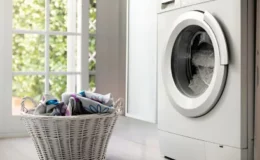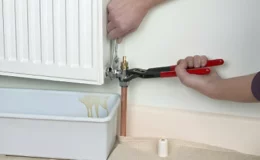
- What we discuss here
- » Signs of a Water Leak in Mains Supply
- » Check the Information on Your Water Bill
- » How to Manage Your Water Consumption
- » Reasons For Higher Water Bill?
- » How to Locate the External Stop Valve?
- - What is an Outside Stop Valve?
- - Locating Your Outside Stop Valve
- - Step-By-Step Confirmation Of An Underground Mains Water Leak
- » Testing for Mains Supply Pipe Leaks
- » How to find the Exact Leak Location?
- » Post-Detection Protocol: Taking Charge
- » Protective Strategies: Safeguarding Your Pipework
- » The Value of Vigilance
Leaky pipes are more than a mere annoyance; they are silent adversaries within your home. Not only do they lead to unnecessary water wastage, but undiagnosed leaks can burgeon into catastrophic problems, causing structural damage and mounting bills.
Detecting leaks in main water supply pipes is crucial to prevent water wastage and potential damage. This article aims to simplify the process of identifying leaks, understand the reasons for high water bills, and the responsibility of property owners and water supply companies in fixing these issues.
Signs of a Water Leak in Mains Supply
Irregularities in your water system may provide the first hint of an unwelcome leak. You may notice a sudden, unaccountable surge in your water bill, indicating usage beyond the norm, or experience an unexpected drop in water pressure. These are often telltale signs that demand immediate attention. Furthermore, the presence of damp patches or pooling water where none should exist is an alarm bell no homeowner should ignore.
Increased Water BillsAn inexplicable increase in your water bill can indicate a hidden leak. Regular monitoring of your bills is necessary to catch such inconsistencies early.
Low Water PressureWhile it might be tempting to attribute low water pressure to municipal works or a busy household, it can be symptomatic of a leak reducing the flow through your pipes. Consider enhancing your plumbing system by installing a mains pressure booster for improved performance.
Unexplained Dampness or Pooling of WaterDamp soil or unexpected wet areas on your property are red flags for mains water supply pipe leaks, especially if no recent rainfall or other water sources can account for them.
Check the Information on Your Water Bill
When your water bill arrives, and the amount is significantly higher than expected, it's natural to question the cause. Is there a mistake, or has your water consumption genuinely increased?
Understanding your water bill is essential in managing household expenses, and sometimes, an unexpectedly high bill can signal various underlying issues. It is important for homeowners and landlords to periodically scrutinise their water usage, identify potential problems, and implement effective solutions.
How to Manage Your Water Consumption?
Consider the following steps to manage your water consumption effectively and address unexpected increases in your bill.
Check your water bill information, including billing cycle changes.First, meticulously examine your water bill information, paying particular attention to any alterations in the billing cycle, as changes in this cycle can influence the perceived surge in water usage.
Verify if your bill was previously based on estimated readings.Second, verify whether your bill was previously calculated based on estimated readings, as discrepancies between estimated and actual usage can result in unexpected spikes in costs.
Assess changes in water usage due to maintenance, faulty appliances, or increased occupancy.Finally, assess any recent changes in water consumption patterns attributed to maintenance activities, the presence of faulty appliances such as leaky washing machines or leaky dishwashers, or an increase in occupancy. By systematically evaluating these factors, you can gain insights into your water usage habits and promptly identify and address any issues contributing to higher-than-usual bills.
Did the number of home members using water in the property increase?Sometimes, for properties without a meter, charges are typically estimated by your water supplier based on the property's characteristics, like the number of bedrooms, which can imply more people—and, therefore, more water usage.
However, this isn't always accurate. For example, a large home with numerous bedrooms but only one occupant could result in an inflated assessment.
It's well within your rights to confirm the accuracy of these charges with your water supplier. If you find that the assessment doesn't reflect your actual situation, you might consider requesting a water meter installation. Most suppliers will install a water meter at no extra cost, though scheduling could mean there's a bit of a wait before installation.
When there's no clear explanation for a spike in your water bill, it's sensible to investigate and fix water leaks as the next step.
Reasons For Higher Water Bill?

Leaks and Plumbing Issues
A common culprit for a spike in your bill is leaks. A dripping faucet, a continuously running toilet, or a concealed pipe leak can result in considerable water wastage. To check for leaks, monitor your water meter before and after two hours when no water is being used. If the reading changes, you likely have a leak. Serviceteam professionals can efficiently identify and remedy such costly plumbing issues, ensuring your water usage—and bills—reflect only what you indeed consume.
Steps to Identify and Fix LeaksConduct regular checks on all visible plumbing, listen for the sound of running water in walls, and consider a professional inspection to be thorough. Serviceteam offers comprehensive leak detection and repair services that safeguard both your home and your finances.
Faulty Appliances and FixturesInefficient household appliances and fixtures like toilets, showerheads, and faucets can significantly increase water wastage. Upgrade to water-efficient models as they can provide substantial long-term savings. Serviceteam stocks a range of approved water-saving fixtures and can install them with unparalleled expertise.
Outdoor Water UsageOutdoor water use, such as garden irrigation systems, can significantly contribute to high water bills during warmer months. Review your settings, replace outdated systems with more efficient drip irrigation, and consider drought-resistant landscaping. Serviceteam's landscaping experts can assist you in creating a more water-conscious outdoor space.
Hidden Water WastersOften, it's the less apparent issues causing excess water use. A leaking swimming pool, dripping irrigation systems, or even a shifted installation can lead to hidden wastage. Regular maintenance checks are advised to prevent future issues. Serviceteam provides specialist inspections to catch and fix such water leak issues before they escalate.

Responsibility for Leak Fixes
1. Property owners are responsible for leaks on the property side, including the external stop valve.
2. Water supply companies handle leaks on the street side.
How to Locate the External Stop Valve?
If you can't find the external stop valve, contact your water supply company for guidance.

What is an Outside Stop Valve?
An outside stop valve is a key element in your home's water system that controls water flow to your property. It's a gatekeeper, allowing you to shut off the water supply during a burst pipe or maintenance works. Knowing where this valve is located can save you time and money and potentially prevent extensive water damage.
Locating Your Outside Stop Valve
Typically, your outside stop valve is under a covered hatch along the pathway or roadway adjacent to your property. It may also be co-located with your water meter, which gives you the bonus of being able to monitor your water usage effectively. Sometimes, the valve may be situated at the end of your road—this is more common in rural or less densely populated areas.
It's prudent to locate and familiarise yourself with the valve before any issues arise. Regular checks ensure it remains accessible and functional when needed most, contributing to efficient leak detection and repair processes.
Step-By-Step Confirmation Of An Underground Mains Water Leak
1. Identifying the Source of water Leak- Locate Your Internal Stopcock:
First and foremost, find the stopcock inside your property. It's typically located under the kitchen sink, in a utility area, or sometimes near the water pipe that enters your home. - Turn Off the Water Supply:
Rotate the stopcock to the 'off' position. By doing so, you're halting the water flow into your property.

- Check Your Water Meter:
Once the internal water supply is off, take a look at your water meter. If it continues to move, this implies there's a leak on the exterior side of the supply pipe. - Recording the Meter Reading:
If the meter isn't visibly active, note down the current reading. Wait for a couple of hours, ensuring no water is used during this time, and then recheck the reading. Any change would signify a possible leak.
- Confirming a Water Leak Inside:
No change in the meter reading after shutting off the stopcock means the suspected leak is within your home. Thoroughly check fixtures, appliances, pipes, and faucets for potential sources. - Confirming a Leak Outside:
Movement in the water meter or a change in the reading with all internal water sources switched off indicates a water leak in the supply pipe outside your property.
Testing for Mains Supply Pipe Leaks
1. Turn off the internal stopcock and check the water meter reading.
2. An increased meter readings indicate a leak on the main supply pipework.

How Do You Find The Exact Leak Location of a Main Water Supply?
[The Art of Non-Invasive Leak Detection]
Discovering the precise location of a main water leak has evolved with technological advancements, offering a more effective and cost-efficient alternative to traditional approaches. Previously, the conventional approach involved extensive digging to expose the pipe, often resulting in a time-consuming and expensive process with uncertainties about the leak's location.

The use of sophisticated acoustic equipment revolutionises this process. This technology, capable of pinpointing buried leaks, such as those under paving slabs, concrete, or soil, relies on a highly sensitive microphone placed on the ground. It amplifies the subtle vibrations produced as water escapes under pressure, allowing the operator to detect any changes in sound.
This non-invasive method not only ensures accurate leak detection within centimetres but also facilitates quicker and more precise repairs. Moreover, it minimises the need for extensive reinstatement work, aligning with insurance company requirements for claims related to leak detection.
Post-Detection Protocol: Taking Charge
Upon confirmation of a leak, one must act swiftly to limit damage. Turning off the water supply halts water wastage and prevents further property damage. The next step is to alert your water utility company and seek professional repair services.

Protective Strategies: Safeguarding Your Pipework
Prevention is always preferable to cure.
Regular CheckupsRegular checks and routine maintenance by professional plumbing services can circumvent potential leaks, conserve water, and avoid excessive repair costs. Innovative technologies, such as leak detection devices, offer an additional layer of security, providing real-time alerts at the first sign of a leak.
Pipe InsulationOne measure homeowners can take to prevent damage is insulating pipes- a practice especially poignant as temperatures drop and risk freezing and subsequently leaking.
Careful ObservationMaintaining the integrity of your home's water supply system demands diligence and, occasionally, the expertise of professionals. Early detection of leaks is vital in water conservation and cost management.
Professional Leak Detection and Repair
Relying on Serviceteam for your repair, advice, and maintenance needs ensures you stand guard against the silent threat of leaks. Our dedication to quality service and qualified and experienced plumbers/ engineers safeguard your home against the unseen, fortifying your confidence in a secure mains water supply.
For a detailed inspection or emergency assistance with detected leak, contact seviceteam today. Let's keep every drop where it belongs: in the pipes.






